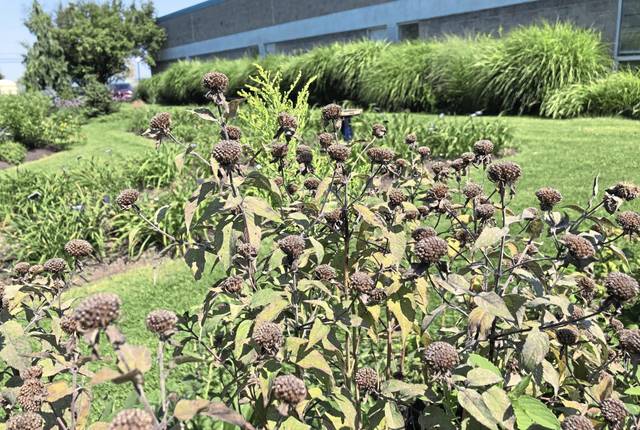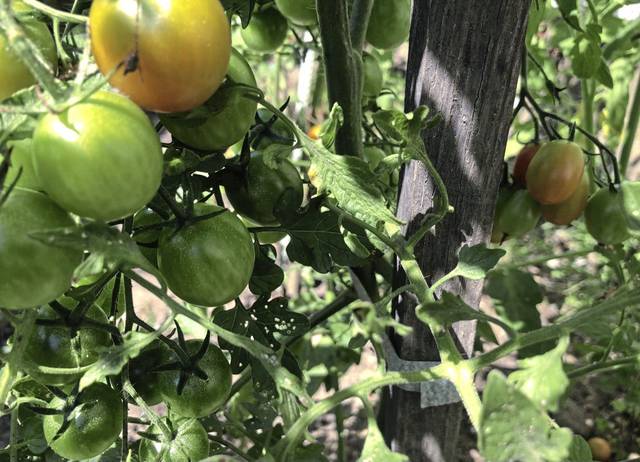Dig deeper: Extend growing season with these fall gardening tips
One thing that distinguishes fall gardening from spring gardening is the pace, said Elizabeth Pesci of Greensburg.
“In the spring, there are so many things that have to be done on a schedule; but in the fall, you can take your time and go a little slower,” said Pesci, who is a Penn State Extension Master Gardener and treasurer of the Greensburg Garden Center.
As growing season winds down and you prepare your gardens for winter, “You can actually stop and smell the flowers,” she said. “We’re usually less busy in the fall.”
The more leisurely pace doesn’t mean there isn’t still plenty of work to do, though.
Fall is a good time to grow one last cool-weather vegetable crop, to keep flowers vibrant for as long as possible and, finally, to winterize.
Still time to plant
“Right now is a great time to sow some late-season crops, like spinach, kale, greens and bok choy,” said Mandy Smith, Penn State Extension Master Gardener coordinator for Westmoreland County.
Broccoli and kohlrabi also are good to plant now, said Dave Vargo, owner of Kiski Plaza Garden & Feed Center in Leechburg.
Pesci adds Brussels sprouts to the list.
Fall is a good time to plant many trees and shrubs, Pesci said.
“There are fewer weeds, the ground is still a good temperature for planting, and we usually have adequate rain,” she said. “I would wait to plant some of the more delicate trees or shrubs, like Japanese maple, in the spring.”
Moving from the garden to the lawn, September also is a good time to overseed if your grass is thin or patchy in spots, Pesci said.
It’s also preferable to split and transplant ornamental grasses and daylilies in the fall, she added.
For some winter color, it’s time to plant small bulbs that bloom in January and February, Pesci said. Some of her favorites include winter aconite, winter crocus, snowdrops and Puschkinia.
The latter “is like a tiny delphinium that blooms in late February,” she said. “I love it, though you don’t see it around here so often.”
She recommends planting clusters of these bulbs together in a high-visibility spot, because the plants are small. Take
Take a closer look
Pesci likes to walk through her flower gardens while they’re still producing to evaluate their eye appeal.
“You can walk through the garden with a pen and pencil and make notes,” she said. “I look at each space and decide if I like it, or what I want to change for next year.
“You might love it the way it is, or you might think, ‘I’d like more blue, or more pink,’ or ‘This doesn’t really belong here.’”
Extend bloom time
Traditional fall favorite blooms like mums, asters and flowering cabbage and kale are on sale now, Vargo said, and will add pop to the fall garden, but the lifespan of summer flowers can be extended too.
Since you never know when that first frost will strike, he said, some sort of row or garden cover can be a good investment.
“You might have one cold night, and then it will be nice for the next two or three weeks,” he said. “Your flowers will last if you protect them.”
“Covers will retain heat overnight. They can insulate the garden 3 or 4 degrees and that’s usually all you need,” Pesci said. “Just make sure they are tight on the ground. You don’t want the cold wind to get under them.”
Deadheading spent blooms also helps the plant to keep producing, Smith said.
To dig or not to dig
As for whether or not to dig up bulbs before the ground freezes, that can depend on the individual plant.
“I and many of my friends have found that gladiolas, if planted deeply enough, will come back every year,” she added, but tropical varieties should come out of the ground.
Among those that should be dug up are canna lilies, dahlias and elephant ears, Pesci said.
“We still get relatively cold winters, so digging up your bulbs is good,” Smith said.
To prepare bulbs for wintering above ground, shake off the loose dirt and then lay them out in a cool, dry inside space to dry out.
“If they’re dry, they’re less likely to get infected with fungus,” Pesci said.
When dry, they can be packed in peat moss or paper and layered in boxes, or hung in mesh bags, and then stored out of direct light in a cool, dry place, like a garage or basement.
Pesci recommends labeling them so they’ll go back in the ground in the proper place come spring.
Putting the garden to bed
These days there are two schools of thought on what to do with gardens, and particularly perennial plants, over the winter — is it better to clean them up in the fall, or leave the spent plants until spring?
“Whether you let your flowers go to seed depends on how you want your garden to look, or if you want it to self-seed,” Pesci said. “If you don’t mind having sort of a messy garden, you can let that happen. It does provide food and cover for birds.
“Some people prefer a nice, neat garden,” she said. “Everyone has a different philosophy. There’s no wrong thing.”
In recent years, Penn State Extension has recommended leaving the garden as-is until spring, Smith said.
“It benefits the insect larva in giving them places to overwinter,” she said. “Leaving the seed heads for the resident birds gives them something to eat to bulk up for the winter.
“We’re thinking of the garden as not just a benefit to you, but also as an ecosystem for other creatures,” she said.
Vargo, on the other hand, thinks it’s better to clear away the old vegetation, to get rid of potential plant blights and insect pests.
He also recommends turning the soil over once the weather is cold but before the ground freezes.
“You’ll turn up insect eggs and expose them to the cold. You won’t get them all, but it helps control a lot of them,” he said. “Anything you clean off helps prevent diseases.”
As for the vegetable garden, Pesci and Vargo recommend sowing a cover crop like rye grass after the old plants are cleared. Alternatively, it can be strewn with clean straw or mulch.
The cover crop will keep down weed growth, while the roots will help loosen the soil while still holding it in place. In the spring, the grass should be turned into the soil to add nutrients.
Shirley McMarlin is a Tribune-Review staff writer. You can contact Shirley by email at smcmarlin@triblive.com or via Twitter .
Remove the ads from your TribLIVE reading experience but still support the journalists who create the content with TribLIVE Ad-Free.








